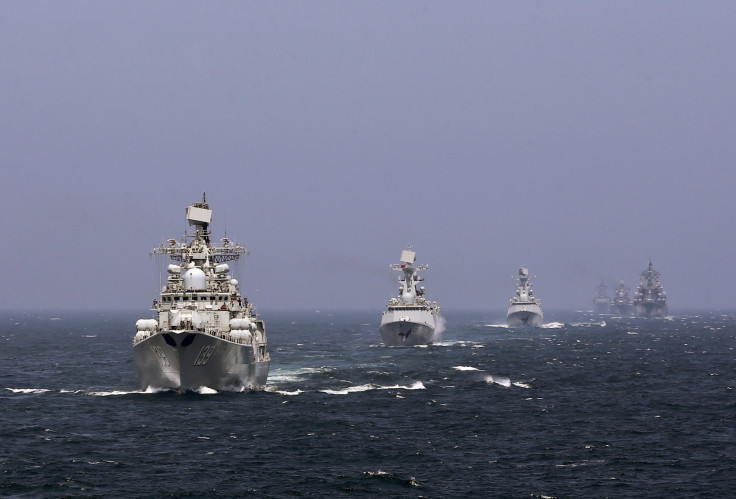Advanced Chinese Spy Ship Near Australia Coast Can Give PLA Navy Edge On US Warships: Report
KEY POINTS
- The ship has a radar aperture that can receive frequencies from warships in the region
- An analyst said Beijing may take Canberra as a rival due to Aukus and Quad
- A Chinese website said U.S.had set up 13 antenna towers at the Exmouth
The Chinese spy ship that was spotted off the west coast of Australia last week had the ability to collect intel on the U.S. Navy warships in the region. The Type 815 Dongdiao-class auxiliary general intelligence ship, Haiwangxing, was detected near Exmouth, where a joint Australian and U.S. naval intelligence station was based.
Haiwangxing is equipped with highly-sensitive equipment, a radar aperture that can receive frequencies and spectra from warships at long distances, reported South China Morning Post, quoting military analysts.
The spy ship sailed down Australia’s west coast, near Exmouth, before changing course and heading east along the coast toward Darwin in the Northern Territory. This put the vessel in close proximity to Naval Communication Station Harold E. Holt, or HEHCS, a joint Australian and U.S. naval communication station close to Exmouth, according to The Drive.
Lu Li-shih, a former instructor at Taiwan’s Naval Academy in Kaohsiung, told South China Morning Post that the spy ship's journey indicated that "Beijing may take Canberra as a potential rival given the clout of Aukus and the Quad." The revisit of the PLA Type 815 AGI to Australian waters, implies the PLA has taken tours to the waters as regular missions.
Last year, China had sent a Dongdiao class spy ship off the coast of Queensland, around the same time a U.S.-Australian military exercise was happening.
According to Lu, the Type 815 spy ship plays a key role in electromagnetic warfare. “The radar aperture on the Type 815 spy ship is able to receive a variety of different frequencies and spectra released by Australian and American warships in long distances that could become important data for electromagnetic warfare," he added.
Another analyst, Zhou Chenming, a researcher from the Yuan Wang military science and technology think tank, too think the Type 815 was more sophisticated than normal military devices. He confirmed that the ship had all the radar systems and equipment to track the trajectory of rockets when China launches carrier rockets into space.
"As the advanced systems to track and send data for flying carrier rockets, the ship is mainly used for finding the specific location at sea for falling rocket wreckages for recycling, but is also good at detecting hypersonic missiles," Zhou said.
Meanwhile, an article that appeared on a Chinese military WeChat account said China had been "more interested in the stuff and assets at the Exmouth communications station since Australia has further stepped up its collusion with the US under the Aukus agreement."
The article added that the U.S. military had set up 13 antenna towers at the Exmouth communications station, with one a very low frequency (VLF) system. These were used not only for naval communication, but also to monitor Chinese satellites in lower orbits after moving a radar system from the Caribbean area to the area.

© Copyright IBTimes 2024. All rights reserved.





















